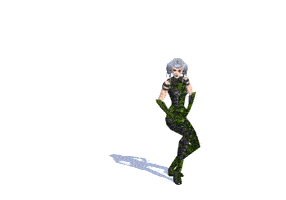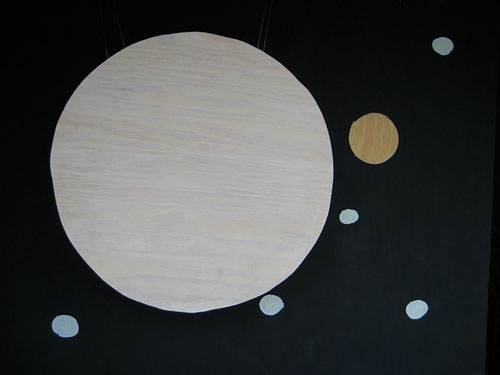
|
Lorna Mills and Sally McKay
Digital Media Tree this blog's archive OVVLvverk Lorna Mills: Artworks / Persona Volare / contact Sally McKay: GIFS / cv and contact |
View current page
...more recent posts
James Hampton

Throne of the Third Heaven of the Nations' Millennium General Assembly. 1950-64
salvaged materials, gold and silver foil
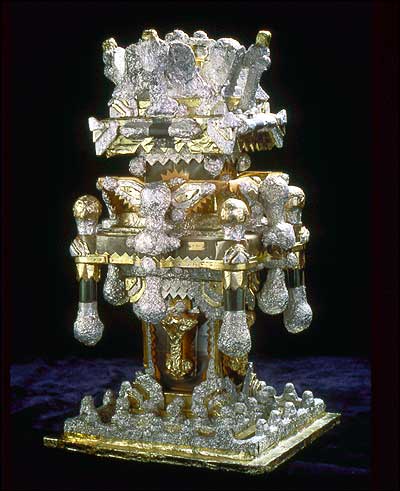
Throne Stand salvaged materials, lightbulbs, foil

Throne
(Thanks to kino t, who pointed me in this direction.)
Today is the Native Day of Action and Via Rail has shut down service between Toronto, Ottawa and Montreal. Might be a good day to browse around at Mohawk Nation News. Links below to two recent articles by Kahentinetha Horn.
"Thomas Walkom wrote today in the Toronto Star that the conservative government plans to give U.S. police agents carte blanche to carry guns in Canada. Last June 2006 undercover U.S. agents [U.S. Border Patrol and ATF] were caught monitoring the Six Nations standoff at Caledonia. Their presence was exposed publicly only after native protestors hijacked their car. Strangely, there was no political or public outcry over what would once have been considered a unconscionable violation of Canadian sovereignty. Instead our men were charged with interfering with these agents foreign to Canada." more..
"Our Indigenous eyes are wide open. That’s what June 29th is about. We know the reality and the legality, in your law and in ours. We are breaking the chains of colonialism for good. You can never put them back on us. You never had the moral high road, including the 401, the old number 2 and the CN. These enterprises and yourselves are all trespassing on our land." more...
"T"
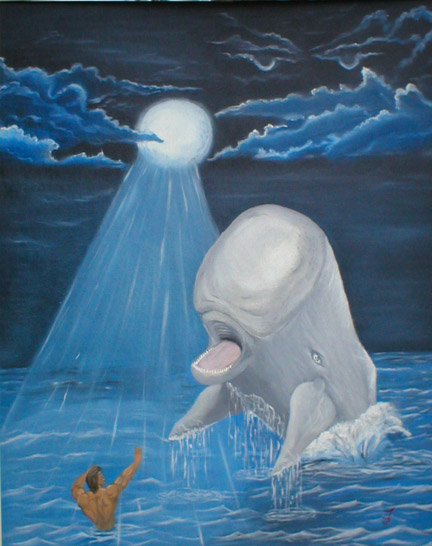
Jonah and the Whale oil on canvas board 26" x 30"
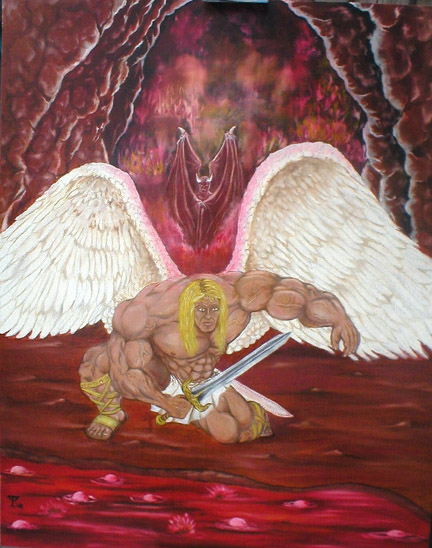
Archangel Michael oil on canvas board 24" x 30"
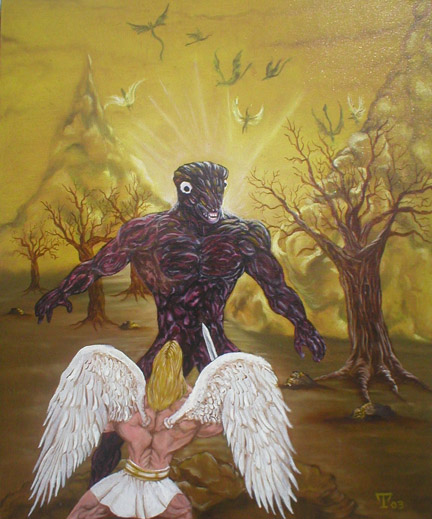
Behind The Veil oil on canvas board 16" x 20"
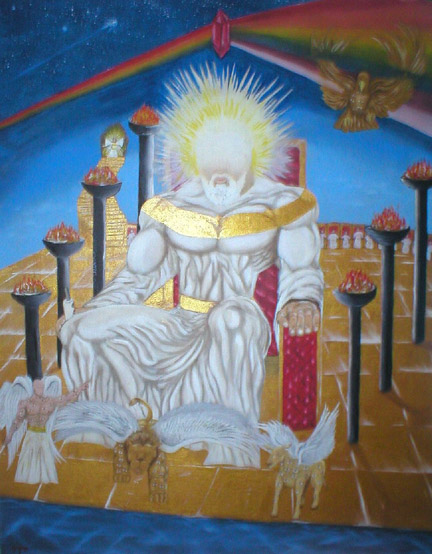
John's Revelation oil on canvas board 26" x 30"
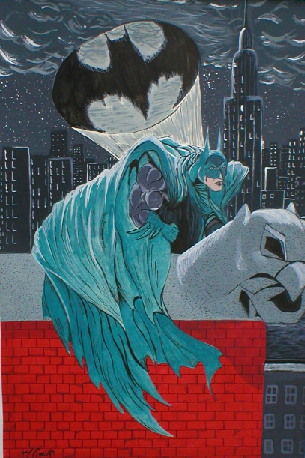
Batman acrylic on comic art board 11" x 17"

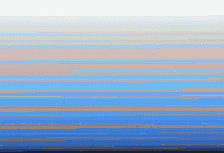
A link to System Displacement by Oliver Laric.
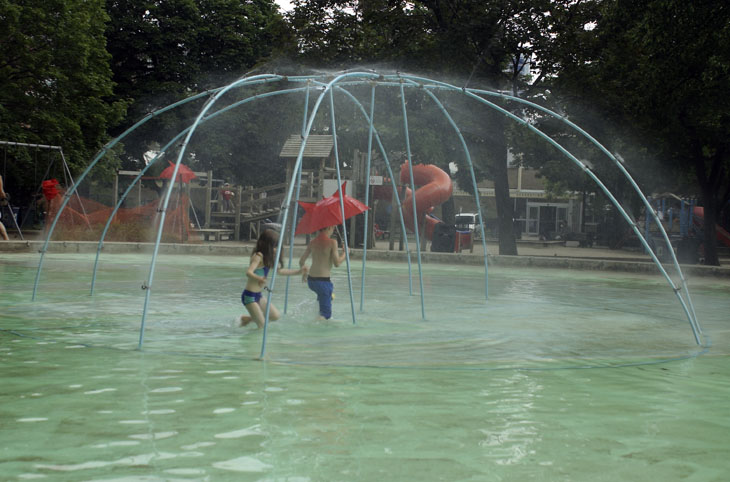
sonar: S.U.R.G.E.: wade 2006 Ingrid Bachmann, Lorainne Oades and Ana Rewakowicz
I 've had a sneak preview of the WADE catalogue (since I wrote for it) and it's gorgeous. Come to the launch on Friday! - Sally
This summer brings you the first ever catalogue for WADE. In the spirit of WADE as a community event, bigger than the sum of its parts, we have invited audience members from each of the WADE installations to share their responses to the project. The catalogue's 56 pages offer full documentation of the event as well as essays by the curators, Christie Pearson and Sandra Rechico and by Artist/Curator/Writer Sally McKay.
Wade 2006 featured work by Atanas Bozdarov and Tomasz Smereka, Peter Chin Louis Laberge-Côté, Leah Decter and Michael Caines, Sandra Gregson, John Greyson and Margaret Moores, Marcia Huyer, Yam Lau, Hazel Meyer, Tony Stallard, Michele Stanley, Theodor Pelmus and Eugenio Salas, Chrysanne Stathacos, Fabian Winkler and Shannon McMullen, S.U.R.G.E. (Lorraine Oades, Ingrid Bachmann, Ana and Rewakowicz) and Nick Tobier.
Contributers are John Armstrong, Marcus Boon, Diane Borsato, Steve Chodoriwsky, Jon Davies, Hannah Evans, Tara Gonder, Sunny Kerr, Juliet Palmer, Kym Pruesse, Aubrey Reeves, Lisa D. Smith, Tegan Smith, Amy Stewart and Krys Verrall.
The WADE 2006 catalogue was designed by The Office of Gilbert Li.
WADE gratefully acknowledges the support of The Canada Council for the Arts, The Ontario Trillium Foundation, The Ontario Arts Council and The Toronto Arts Council.
The launch will be at YYZ artists Outlet, 401 Richmond Street West, Friday June 29 8-11 pm
Since Sally brought up this subject, two posts down, that's all the excuse I need to post some images on the front page.
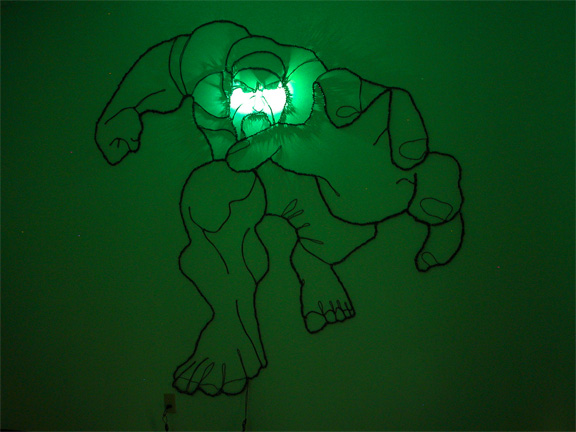
Lisa Neighbour The Hulk in Knots 2003 electrical wire, light bulbs
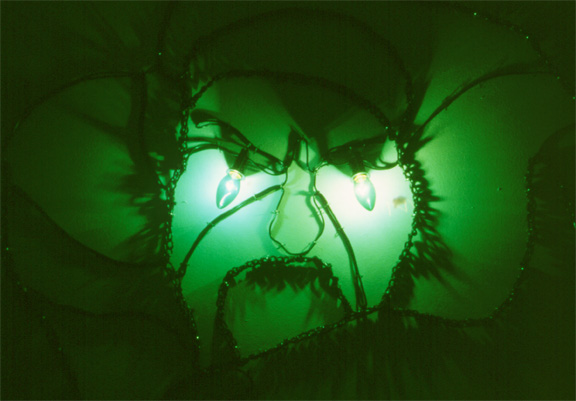
The Hulk in Knots 2003 (detail)
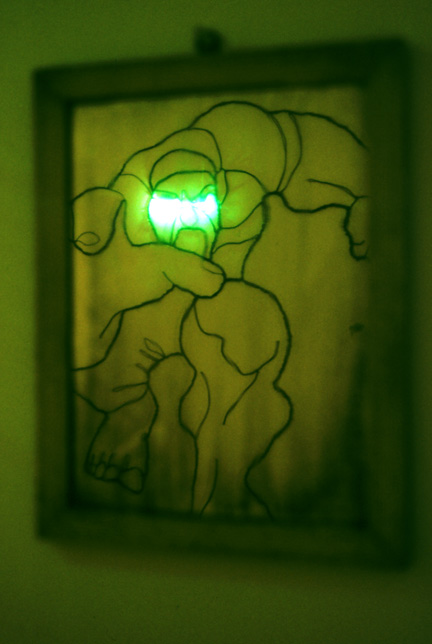
The Hulk in Knots 2003 (Mirror image from 2003 installation)
Art in Toronto has faced some challenges lately, in the form of a vague call for self-definition. Various variables have played a role in this strange sense of urgency to encapsulate art activity in Toronto. I don't have a handle on it, but here are the influencing factors as I see them:
1) Instant Coffee's diaspora. This collective made a big impact promoting a local, relational, art-as-social interaction party/exhibiton vibe in this town. Now that one of the most prominent founding members, Jenifer Papararo, has morphed her career, both geographically and conceptually, to take up the role of Curator at Contemporary Art Gallery in Vancouver, the immersive momentum of the group has dissipated in TO. If art's not a big party...then what is it?
2) RM Vaughan's infamous calling-out of Vancouver photo-conceptualists in Canadian Art. This topic causes an allergic avoidance response in many Canadians, me included, and I can't actually bring myself to dissect it all here. There has been some heated and informative debate on the topic over at Simpleposie. Browse the links, you'll find it. The upshot, however, is a kind of frisson of regional competition. Q: What's Vancouver got that we ain't got? A: Art stars.
3) uTOpia 1 and 2. These Coach House Press publications focussed some hyperbolic-yet-often-insightful attention on the downtown TO culture that generates art in Toronto. Links were made between development on Queen St. West, commercial galleries, psycho-geography, graffiti, public art, the latent multi-cultural kinetic force of the suburbs, urban planning policy (including Superbuild funding for recent big architectural initiatives) and the eerie manic energy that is being generated by the two mere-blocks-apart downtown art hotels, the Gladstone and the Drake.
4) The fact that the Toronto Alternative Art Fair International became, over a very short space of time, functionally indistinguishable from the official, trade-show, we're a World-Class City sales event called the Toronto International Art Fair.
5) The emergence and closure of a mutitude of indpendent art ventures that blurred the boundaries between institutional curation, entrpreneurial commerial galleries and the venerable tradition of DIY Candian artist-run culture such as: MOCCA, Diaz, Jessica Bradley Art Projects, the closure of Zsa-Zsa, the move of both InterAccess and TPW to store-front spaces at Ossington and Queen, Le Gallery, and many more (I've left a lot out). 6) "We Can Do This Now." This Power Plant exhibition was a timely disaster that claimed to represent current art activity in Toronto, but utterly failed to encapsulate any of the above.
In light of all this kerfuffle, I really enjoyed the big videos currently on display at PREFIX Institute of Contemporary Art. 25sec.-Toronto, by Berlin artists Angelika Middendorf and Andreas Schimanski, featuring various personages in the Toronto art scene, shot against a slick white-screen background, pontificating on their hopes for art in Toronto to a grand total of 25 seconds each. From what I could tell from conversation at the opening, the display drew a predictable response of suspicion, shame, sour grapes and chagrin from the audience. People who were included in the line-up were gosh-shucksing all over the place, while those who weren't nit-picked the choices. I personally noted a marked lack of attention to the blogosphere, particularly the omission of Jennifer McMackon who's incisive Q&A blog, Simpleposie, does a lot to instigate art talk in Toronto these days. But that's not a big surprise, Canadian art-types have always been slow to grasp the potentials of the internet. Nor is it really important to the project.
This display made no pretense to be totally comprehensive. Instead, a range of participants were showcased, from some of the most established gallerists, curators and artists to some of the most newbie. Everyone looked vulnerable; as Tanya Read of Fly Gallery and Mr. Nobody fame pointed out, the unforgiving white light enhanced everyone's wrinkles, pouches and flaws. As video and performance artist Andy Paterson pointed out, everyone looked "wider" than they really are. Despite the tight 25-second timeline, the camera lingered long enough for embarrassed smiles, fidgets and the inevitable Candian that's-just-just-my-2-cents-worth shrug. The end result was a picture of good-vibe enthusiasm; a committed pile of folks making culture happen here. I loved it, and it made me feel happy that I live and work in this town.
On Thursday night there were a big pile of openings in Toronto. True to form, I didn't get to most of them. I did go to MOCCA for their fabulously promoted show of Toronto's most loved and hated art trolls, which I can only assume is an answer to the Power Plant's recent, sad attempt to portray the Toronto art scene with the worst-named exhibition ever, We Can Do This Now (discussed on this blog here.
The opening for LoVe/HaTe: New Crowned Glory in the G.T.A. was packed packed packed. I had my badminton racket with me. My hair was frizzy due to a long day of riding around town and attempting to play badminton in the park in the wind. I didn't stay very long and made virtually no attempt to look at the art. From what I could see, the big elegant gallery looked a bit of a mess, which is usually a good sign, as far as I'm concerned.
RM Vaughan and Jared Mitchell collaborated on a series of banners spoofing Toronto's ongoing Live With Culture campaign. These were up near the ceiling so I could see them above all the chatting faces of the various nice people I haven't talked to in way too long. I'm already familiar enough with this project, featuring RM as the stand-in model in slothful track-panted repose, that every time I notice one of the original ubiquitous civic banners featuring tight-bunned modern dancers in mid-leap my first thought is, "Oh, RM and Jared have got their work hanging on King Street."
I was also really happy to see Lisa Neighbour's Hulk again. I wrote about this piece years ago, here when it was first exhibited as part of a Persona Volare show on College Street. Lisa had another great illuminated work, a big necklace made from glowing doggy chew toys. L.M. pounced on it to do some squeezing, in case they squeaked, and then terrorized the poor sweet staff person who gentley and rightly requested that we not touch the art, by proclaiming that she "knew the artist" and that the stricken waif could use her cell phone (L.M. doesn't have a cell phone) to call Lisa and confirm that it was okay. It was the kind of over-crowded scenster opening that seemed to call for acts of cruelty, and indeed, one of the more fragile floorworks, a prostrate peson made of smallish cardboard pixels, was soon carried out, funeral-style above the shoulders of four strapping staff-dudes, because it had been stepped on one too many times.
I have no idea what else was in the show. It all looked a bit scruffy. I normally prefer a rough and clumsy gawky show to one that is primped and styled with high-end polish, so I will go back and take a better look before I make any kind of definitive claim that the thing was badly thrown together. Aside from the works I've described, only two other pieces caught my attention in the midst of the social mayhem. One was a pile of pieces of construction debris, painted orange on one side, that lay scattered on the floor underneath the title wall. This may have been a curatorial design feature rather than an artwork, but I liked it. The other was a big purple balloon suspended in the courtyard with art by Fiona Smythe on its two flat sides. Fiona Smythe is one of those artists who can do no wrong, in my books, but I didn't think the pop/commodity implications of the inflation, nor the elevation, served her normally transgressive, immersive and detailed icons very well.
I also got to the Prefix Photo opening. Details are here.

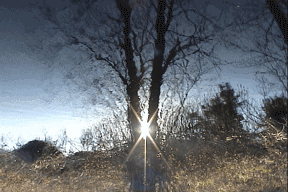
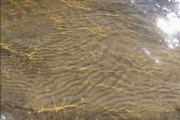



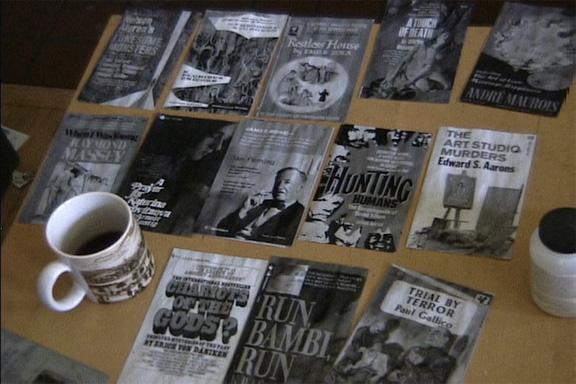
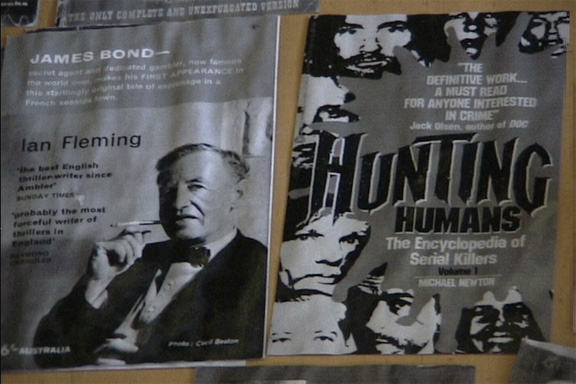
These are the pieces I am putting in the Titles show curated by Yam Lau, Sunny Kerr and Tania Ursomarzo of WayUpWayDown who describe the event as an itinerant exhibition.
23 June, 07- 8 September, 07
Opening on Saturday, 23 June, 2007 from 2-5 pm
Balfour Books
601 College Street, Toronto, ON M6G 1B5
416-531-9911
noon-11pm daily
The full list of participating dirty thieving vagrants: Klaudia Biala Flavio Trevisan Juro Osawa Tania Ursomarzo Yvonne Singer Stephanie Chabot Marcin Kedzior Gordon Lebredt Yam Lau Mary Porter Janice Gurney Cheryl Sourkes Lorna Mills Scott Sorli Rachele Riley Andy Patton Evan Quigley Paulette Phillips Michael Maranda David Scott Armstrong Becky Singleton Barbara Balfour Stephanie Shepherd Sandra Rechico Andrew McAllister Craig Rodmore Sunny Kerr Alex Xie
My pieces are on the pulp novel table, in a messy gloppy stuck pile since I printed and glazed the covers front and back, the stuff will probably melt together in the humidity. Right now they're all bendy like rubber.
I will get an image of Sandra Rechico's piece, as soon as possible, and respectfully turn it into a jigsaw puzzle.
piano made from cell phones
by Joe McKay
We should be a jigsaw puzzle blog for the rest of 2007.
The indispensable catalyst is the word, the explanatory idea" ...some short Ryszard Kapucinski excerpts posted in this thread.
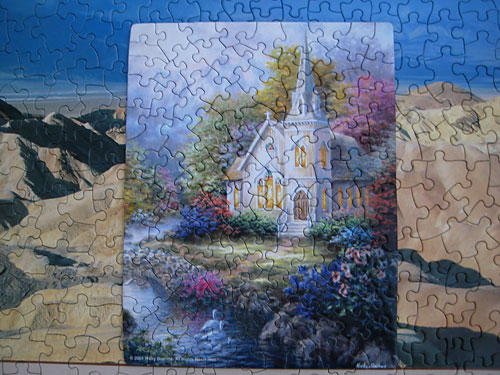
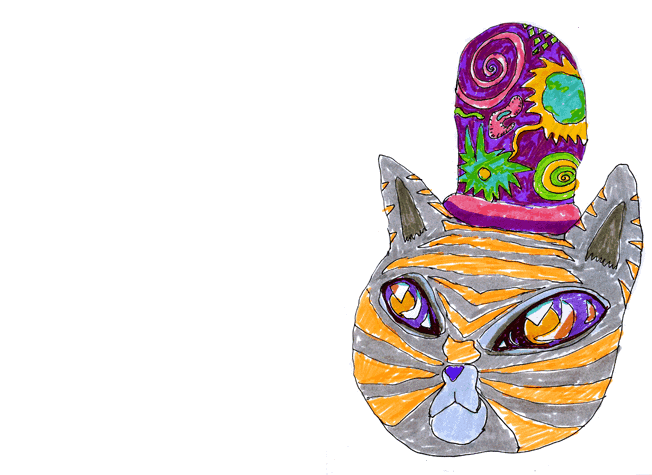
Maybe not the oldest, but definitely the cutest...especially when eating her hibiscus flowers.
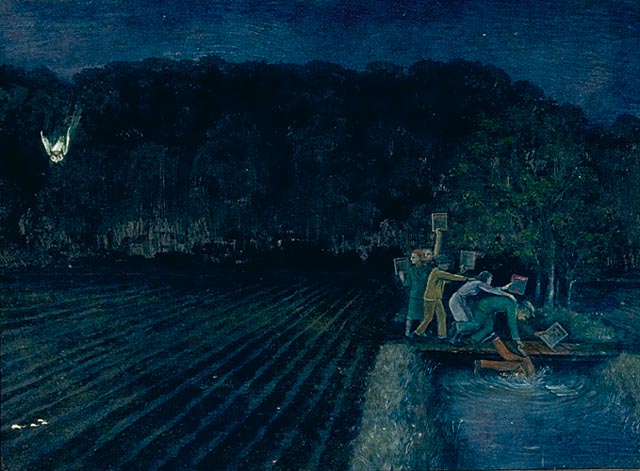
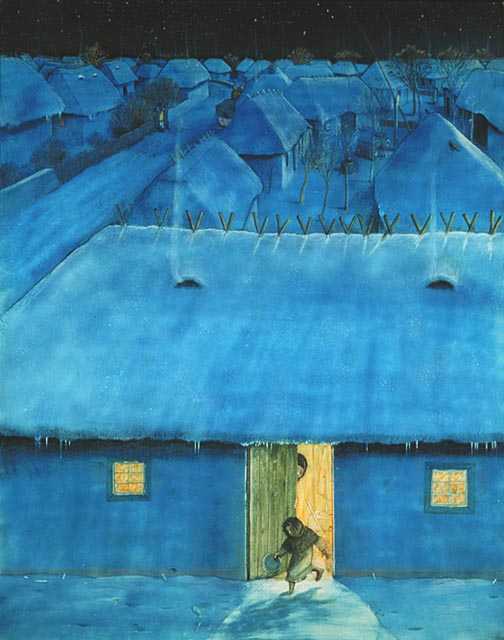
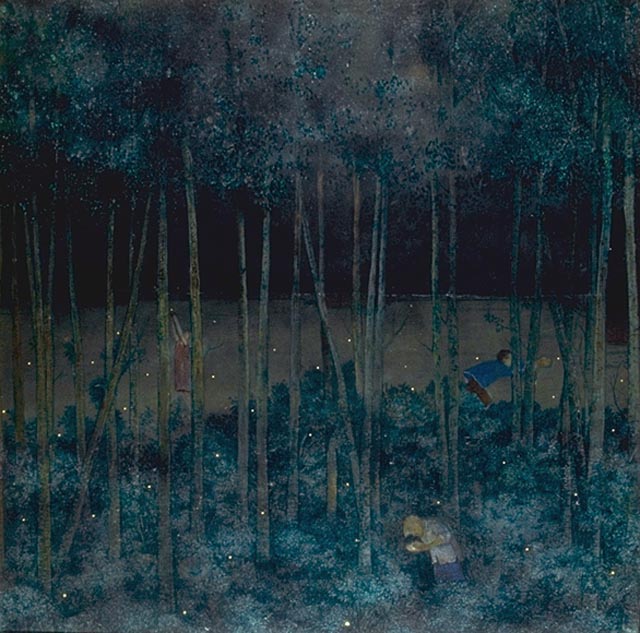
Anthony Easton on William Kurelek
William Kurelek was an outsider artist: he had the mental illness, the geographical isolation, the ethnic worries, the religious obsessive, and the monastic, hermetic strangeness expected of people reclaimed as art brut after death. William Kurelek was an insider artist, he was collected by governments, museums, corporate collections and the industrial elite, his gallerist was among the most famous in Canada, and he was cunning in matters of personae, cash flow, and networking. His work is both cloying and visionary, rural nostalgia and apocalyptic terror, tender and daring. Thinking about the tensions and delicacies of the negotiations, and the ambiguous effect, 30 years after his death, is to question the very core of outsider status. Writing about this ambiguity, I am hoping to return him to his proper status: as one of the most important religious painters of the 20th century.
Unpeeling the onion is finding where the isolation central to Kurelek began with, the central beginning fact, and something that he returns to, is his role as not only a prairie painter but some kind of dumb hick. He grew up in Whitford, Alberta, and then for high school moved to Stonewall and then Winnipeg, Manitoba. His father farmed grain in Alberta, and raised cattle elsewhere. Though he claimed to be part of a larger community of Ukrainian speakers in Alberta, he also talked about how much he despised his father, and how isolated he felt from the mainstream—how that growing up in Whitford had set him apart. Whitford has returned the favour, Lacombe, a larger town, has absorbed it and Lacombe has not noted his beginning there. In a diary he wrote in 1965 when he went back to the farm from Christmas, he talks about how this farm life centered his continued practice: "I recall how in…western winter; nothing sheltered a man sufficiently except the heated farm house and so I compared it to a person in this life trying to find comfort in all sorts of places and activities."
Moving to Stonewall at the age of 15, when the farm and other investments his father made crashed because of the Great Depression, was a continued frustration. In later interviews, he told scholars and journalists that he got attacked when he went to school, because he could not speak English well, he didn't wear the right clothes, and occasionally he smelt like shit. It sounded like the usual tensions between a farm kid and a city kid in certain schools that were located in places that accepted both. When he moved onto Winnipeg itself, and then the University, he still felt like he didn't belong, I think that part of the isolation was that he always felt, as he wrote to his gallerist Av Isaacs in 1964, "like a clumsy farmer", and this was after he spent time in Mexico, India and London, while living in the biggest city in Canada.
I'm getting ahead of myself. His move to Winnipeg proper, after high school was a move away from a geographic, physical isolation and a move onto an ethnic one. In high school, though he learned English, he still very much felt like a Ukrainian in an Anglophone world. His biographer, Patricia Morley, would write about this time: "Humiliation came in several forms. The first was language. The Kureleks spoke Ukrainian at home…Bill and John, began school together in March of 1934, discovered that there was a taboo on any language but English in the public school…Decades later , Bill remembered the disapproval that greeted his exclamation of "Mookha! Mookha" (Ukrainian for "fly") and he credited the incident with inhibiting his enthusiasm for oral expression." Here he ties his ethnic and his occupational history as the central place where to begin with his work.
Like many students, Kurelek wandered after high school, spending some time finishing an art degree at the Ontario College of Art and Design, in Toronto, and the Instutio Allende, in Mexico. His time at both would prove fecund. He ended up living in Toronto for most of his adult life, marrying and having children, finding work, and commercial success there. He found Jesus in Mexico, wandering the desert, and hearing prophetic voices coming for mysterious figures. He claimed that these figures told him that he would do great things, and he wrote about these great things, and the general feelings of prophecy, in a 12-page hand-written letter to his roommate, Fairfield, back in Toronto.
This trip to Mexico would be the beginning of his life as a religious figure, though his parents did not actively talk about god in the house, and his father was dismissive of it, there was a bit of cultural heritage that he inherited. Though the heritage came about in different places than the usual Catholic orthodoxy. Materials left by the Jehovah's Witnesses inspired some of his first drawings. Their lurid demons, monsters, and other consequences of the apocalypse would both excite and frighten him as a child, resulting in some of the first drawings he ever did, and drawings he remembered several times afterwards, including his autobiography, and interviews with Morley.
The messages in the Mexican desert would be the beginning of his role as a prophet (and it makes sense that it was in the desert, all the great catholic cranks began in the desert) the biggest religious changes began with his time spent in London. In his autobiography, he claimed that he went to London to "complete his art schooling and to find, through hospitalization, for his chronic depression and inexplicable eye pains" This statement in many ways, is the crux of Kurelek, his mental illness and psychosomatic blindness, the half of his personality as prophet, and stranger in a strange land, the furthering of his art education being a sophisticated center.
London was the beginning of this split in Kurelek, the one that is the centre of my arguments, and it might be a good idea to explore each more carefully. The paintings that he saw in London, at private galleries and public museums were the best of northern European work. He worked as a framer at several places, and returned to the work when he moved back to Toronto. The work that he saw in those galleries in London was high end, both decorative and more specific, he had an art training, not only looking at canvases with much care, but also literally deconstructing them, to make sure they fit in new frames.
The closeness he had to art was continued in his trawling through public spaces in London, including the Tate Museum. Here he wrote letters, and spoke highly of work by people one would expect him to love, including Breughel, Blake, and Bosch, but also such people as varied as Toulouse-Lautrec, Constable, and Turner. In addition to his formal, this informal education, suggests an explicit attempt to place himself in a northern European central tradition. Which makes his other experiences in England a little more interesting. He ended up hospitalized in England for severe depression, first as an inpatient in the Netherene asylum in Sussex, and later as an outpatient at Maudsley Institute, in London proper. During this time, he was under the care of Dr Edmund Adamson, who described his patient thusly: "When I first saw William, he was extremely withdrawn. His body was huddled up and he was nursing a small doll which he had made. He could hardly speak and it soon became obvious that he would not be able to mix with the other students." Over the next few years, the usual treatments for depressed patients occurred, including psychotherapy, and electro-convulsive therapy. Unlike many other Freudians at that time, the staff there, encouraged Kurelek in his continued religious training, and the artist assumed that his finding god, in London, first outside the hospital and later at the hospital itself, was the reason why earlier attempts at self harm failed, and why he didn't end up killing himself at all.
Adamson was an innovator in art therapy, and actively encouraged Kurelek to paint his way out of mental illness. In this set of circumstances, he painted dozens of work over the years he was at both hospitals, in addition to drawing and other crafts. Some of these paintings were the most dangerous of his career, paranoid, exhaustive canvases of all the worlds evils. They included Behold Man Without God, and the Maze.
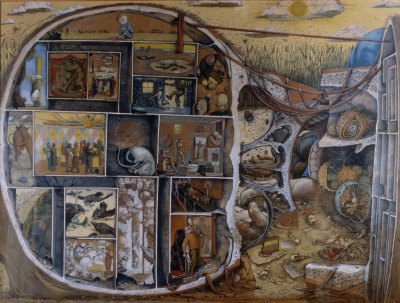
The Maze is the most famous of Kurelek's England era canvases, ending up on a Van Halen album cover, and in books by Time Life, and being written extensively about in various medical journals. Looking at the Maze more closely, it is literally, about the self. A collection of images, are tightly contained in the skull of the artist. The images are as grotesque as the Bosch work that he saw at museums and other galleries. In fact, that the skull is resting in a landscape of dusty red bareness suggests very much that this is his personal Garden of Earthly Delights. There is also something incredibly domestic about the skull, with shelves, floors, walls and window. The combination of psycho-religious excess and domestic comfort would latter become the central theme in his work.
Kurelek wrote about the work, in depth, as was required by the talk therapy milieu of the time. He divided the painting into six sections: Home, Politics, Sex, Social Relations, Life and Death, the Outside World. The six sections were further divided, and they were an odd mix of urban sophistication and rural touchstones. The sex section has him being ripped apart by a bull racing to copulate with a cow, or the section of home, where he talks about a fear of starving, literally kicked into the snow by an uncaring father. But he also talks about slick highways, steamrollers, test tubes, and the fear of nuclear annihilation. He ends quoting TS Eliot: "The thorny, stony ground is a kind of T.S. Eliot Wasteland - spiritual and cultural barrenness: the pile of excrement with flies on it represents my view of the world and the people that live on it. The loosened red ribbon [linking the 2 halves of the skull] bound together the head of a T.S. Eliot Hollow Man, and was untied by psychotherapy" The analysis, paranoia, and exhaustion, trying to find a place between rural openness and city suspicion is central to his work, and the second masterpiece he completed in the hospital, which also works in his new found religious obsession.
Behold Man Without God is as external a painting as The Maze is an interior painting. About the end of the world, there are four main sections, functioning vertically. It has the tower of Babel, an army of aborted foetuses, an ogre forcing a man to plough the fields, a rat with a human face, an orchestra, and other acts of spectacled violence. It has the same kind of iconography, and explanations that arrived at the same time as other artists at that time, the fury of Francis Bacon, the viciousness of George Grosz, and the intensity of Goya, but those all the usual touchstones of radical pacifism. What the most impressive thing about the work is the amount of information it manages to find in its small canvas. The strength of these two paintings, is not their madness, but the power of composition. His later religious paintings had the effect they did, because of his training and knowledge, rather then the subject matter.
The two paintings written about here, are central to Kurelek's understanding of the world, but it must be understood that he did not only paint religious work. Morley writes about a work that he did in the 1940s, "an amusing work from this period, featur(ing) the fourth floor baron from whom Bill sublet his room. In this kitchen scene, Mr. Meyer is shown reading a newspaper, one slipper on and one off"…she continues details include underwear drying on a line, a hot water bottle, peeling plaster, loose wallpaper ad a jar of marmalade labelled "Golden Garbage"…" His eye for detail, and his visual exactness then was not only limited to torture, but to the banal every day life.
Kurelek left the Netherene hospital in 1955, he would stay for a while in London, working with The Guild of Catholic Artists, staying in a boarding house of other Catholics, and taking the catechism. He would then travel, a bit in Europe: Turkey, Greece, Italy and eventually to India. Throughout this, he was painting and drawing. A work of his from India is in the National Gallery of Canada, a emaciated hand begging for food through the window of a bus.
When he returned to Toronto, he started attending the Catholic Welcoming Center, on Bloor Street. He meets his wife there. He would also get a job at the Av Issacs gallery, where he was the only person in the framing shop who knew how to gild, a skill learned from his time in Europe. At this point, he started to settle, diving his practice in two: The Potboilers, or work that was easily sold, mostly paintings of religious nostalgia, and the Propaganda paintings, often work that was about his fears of the end of the world. He also made several large series of paintings: 160 illustrating the crucifixion, about 60 about the End of Days, a dozen portraits each of Irish, Ukrainian, Jewish and Polish immigrants, hundreds of landscapes, still lives of his tools, images of Canadian patriotism, and various nativities. His profligacy was what might make him an outsider artist.
The fear mostly came from nuclear terror, and his several paintings of a world that ended with an atom blast, come across as almost cold war kitsch. He was the first citizen of Toronto to gain a permit to build a bomb shelter, but he ended up using it as a studio to paint in. Sometimes the work manages to be genuinely horrifying, depicting the real fears that permeated the cold war. In his 1965 canvas, This is the Nemesis, an atom bomb levels the city, with modernist tower blocks, and industrial detritus melting into lake Ontario, hundred of people on the ground%2 C with no place to flee. There is also a painting where he depicts a farmer fleeing the bomb, the painting has the title, No Time to Fetch His Hat—so they are not all serious.
There are other paintings of the end of the world that do not depict the end of the world, one of the strongest, and strangest was given to the Basillian Fathers of St Michael's college at the University of Toronto. Painted in 1962, and called the Rock, it is among the masterpieces of religious art, and has no real rivals in the 20th century. Demons swim through a tumultuous sea of blood, their spears held upwards, trying to catch souls floating down from the sky. In the middle, a pure white mountain, emblazoned with the papal seal, and the words of Christ, regarding Peter as the rock of the church. A black church rests miles from the sea, protected by the Holy Spirit as a dove.
Their were other moral concerns, that he held deeply. He was vehemently anti-abortion, and has had several canvases that suggest a horror of abortion, and these were done after he had his own children. His love and devotion to the, pushed his fear of not having any children, to the forefront. One, called Our My Lai or the massacre of Highland Creek, is a beautiful winter landscape, with perfect bare trees, and deep green pines. In the midst of the white snow, are garbage cans; at first one thinks they are pails of apples or other produce, something pastoral. They are filled with foetuses, overwhelming he landscape. He writes about the work, acknowledging that it is offensive to people who did not agree with him but "I know that unborn babies are human beings, I believe myself duty bound to speak for them because they cannot speak out for themselves…"
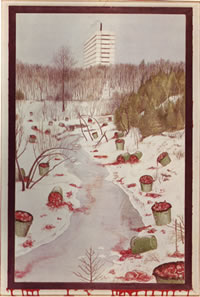
He also painted the mayor of Toronto David Crombie in a delightful painting of green grass, blue skies, and general recreation, but in the dark woods on the far corner of the painting, away from everything else, Crombie is feeding babies into a wood chipper. Talking to Crombie about this work, 30 years after it was painted, I asked him why he displayed it so proudly in his office. Crombie is an old leftist, for a women's right to choose. He talked warmly of the artist: "Bill saw what I was doing as mayor and he was quite laudatory, (but) this was a significant issue we disagreed on. He saw the mayoralty and the city in its totality", and that totality featured the good work that Crombie was, preserving the beaches, and the work that Kurelek thought was morally wrong, including abortions.
There are also works that do not depict the end of the world. The conservative aspect of his work, is mostly talked about, and sometimes has an intensity of vision, a sweet and gentle humanness that caused the New York Times to call him the American Breughel, and caused Tundra Books to publish two children's books of his work: A Prairie Boys Winter and a Prairie Boys Summer, which have been made into stage plays. These works are genuine, almost naïve depictions of life on the farm, and seem much happier then the images made earlier—including the Maze. All of the usual Canadian past times are depicted, including playing Fox and Geese, shinny hockey, feeding the cattle, making fence posts, and skating on bog ditches. Though they have a certain sentimental edge, the colours are rich and the compositions are strong. In Crows Leaving Before Winter, the entire left half of the canvas is empty, but for blue sky, a strong line of black birds leads the eyes to over the horizon, for example.
These are the kind of paintings that made Kurelek famous, and he was at the end of his life. He did a Christmas card for a few oil companies, was in every major collection in Canada, had work given as a gift to the Queen Mother, and toured throughout Europe, America, and finally Russia, He eventually sold work to the most famous collector in Canada, Ken Thomson and his auction at record is now more than a quarter of a million. People like him. But he is viewed as cute, as undifficult. I have concentrated on his religious work here, and have given a short shrift to his non apocalyptic, non religious work…I want to end this essay by talking about my two favourite works of his, one about God and one about his ordinary life.
He lived in the Toronto neighbourhood, the Beaches, raised his children and lived a good life there. Though he died at 50, he had an enormous amount of work behind him. One of the last things he did was an altar mural for Corpus Christi, the church he attended on Sundays. At the side, outside the usual view, the work was 10 feet high and 5 feet wide—it was gigantic. The main piece of the work was an illustration of the miracle of the loaves of fishes, one of his favourite moments in the life of Christ, and one that he worked with before. He transposed the miracle to his time, with four priests distributing communion while the congregation massed around him. The priests were those that worked in the church, and the congregation were members of Corpus Christi. All of them were together, in a radical egalitarianism. But around them, was colour that Kurelek should be so well known for. The green that only comes in the prairie about three days a year in may, a perfect sparkling blue, and a road way, with his communities, and the scarlet TTC street cars, and other details.
He loved Toronto, he loved that congregation, and you could tell that the loaves and fishes were such an important miracle for him, because no one would be hungry when it was still operational. On top of this mural, was a half circle, divided in three. Here, was Christ crucifying, being buried and rising again. These three small works, high up on the wall, have a loving hope. The sunrise at the rising of Christ, is so warm and enveloping and the crucifixion reminds me of Blind Willie McTells Dark is the Night, Cold is the Ground. Black as pitch, with no stars, and just he bare number of people needed to witness, it had a strong, stark power, away from the luridness of much Catholic art. It's hidden, and not often written about, but the work is a masterpiece of narrative economy, and Christian devotion.
The other work I wanted to mention was a grouping , called the Tool Paintings, work that I had never heard of, until I found a small book by poet and artist Ramsay Cook, who worked with William in the framing gallery of Isaac's gallery in Toronto. These works had a plainspoken intimacy, and had less going on then most of his work. They are simple, small works, that feature the tools that he used in the framing shop, a blacking brush, a tape dispenser, a finishing glove. The colours are perfect, the slightly sickly yellow of scotch tape, the peach of a rubber glove, the warmth of pine or elm, and all of them had one element, no extraneous details. They are virtuoso work, intensely connected to the daily practice, and very much about the working class permanence that he lived with.
Reading Cook's volume, is the same thing as talking to parishioners of Corpus Christi, Mayor David Crombie, the priest who taught at St Michael's, and others. Those who talked to Kurelek, outside of his Gallerist, alone, talked of someone shy, devoted, and loving. There was a warmth and devotion not only to the work, but to the people around him. The work that is sentimental, is because William Kurelek himself was sentimental, and the work that feared God with a prophetic urgency was because Kurelek wanted to save the world from the wrath of an angry God. Having both of them working together, is a gnarled root, central to understanding much about these aesthetics.
(originally posted on Tangerines in a Red Net Bag )
Big Culture Sunday
This weekend Von Bark and I tried to see the Robotic Chair doing its thing in a Roots store, but the darn Luminato festival website (Toronto's latest civic arts extravaganza) neglected to list the special Sunday times, and we showed up at exactly the wrong hour. Instead we went to the Royal Ontario Museum and walked around inside the underwhelming Libeskind crystal. The light is nice and so are the angles, but the ceilings are kinda low and all the walls are slanty. I dunno how they're going to mount any successful displays in there. But I still love the ROM, they didn't mess with the grand old staircase and the massive totem poles. We lost ourselves wandering in the old section of the museum, looking at the Acropolis diorama and the big Bodhisattva sculptures. After that I continued on downtown to catch a bit of the end of Luminato. Max Streicher's big horses floating over Union Station were great: apocalypse meets Alex Colville (Colville horse& train painting posted below). I forgot my camera, but there's good Flickr pictures here. R.M. Vaughan's Globe and Mail review of Luminato is here. I have to agree with his dismissal of the big black balls at BCE place, although one of them was deflating like a great big testicle, which added a humorous, though unintentional frisson. I didn't get to see Rafael Lozano-Hemmer’s piece. I wish I did because many people beside R.M. were not impressed, but R.L.H. is one of my favourites and I wish I'd seen it for myself.
Update: Timothy Comeau's excellent review of Luminato is here. [via Simpleposie]
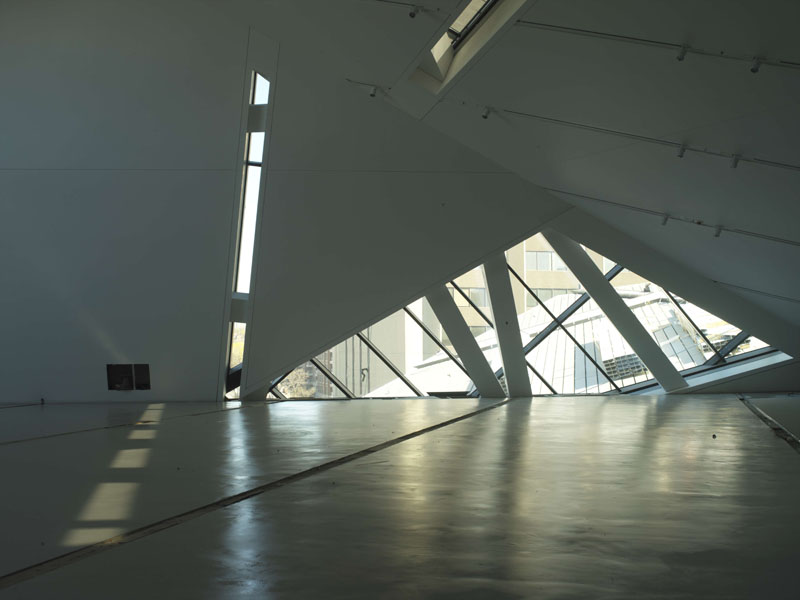
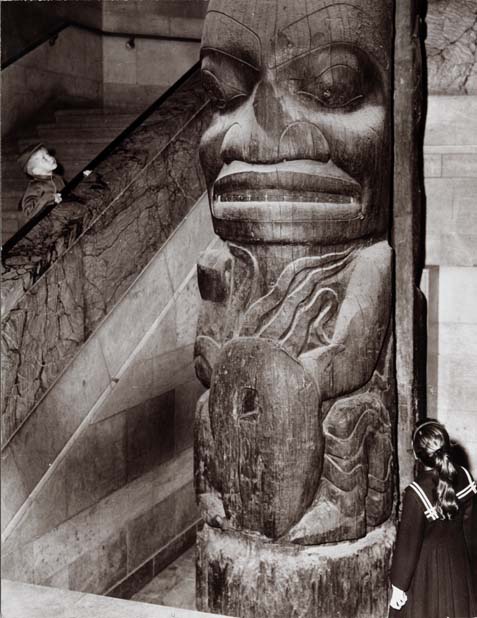
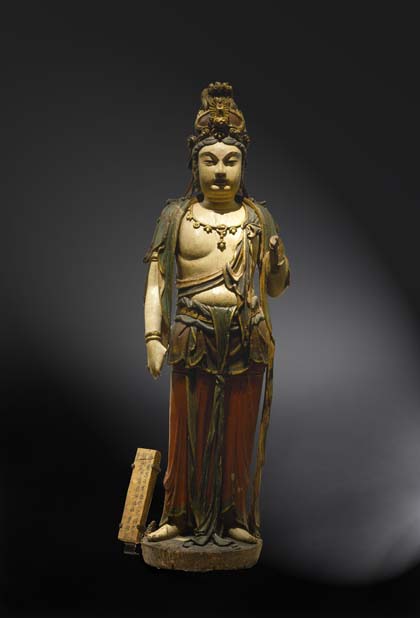
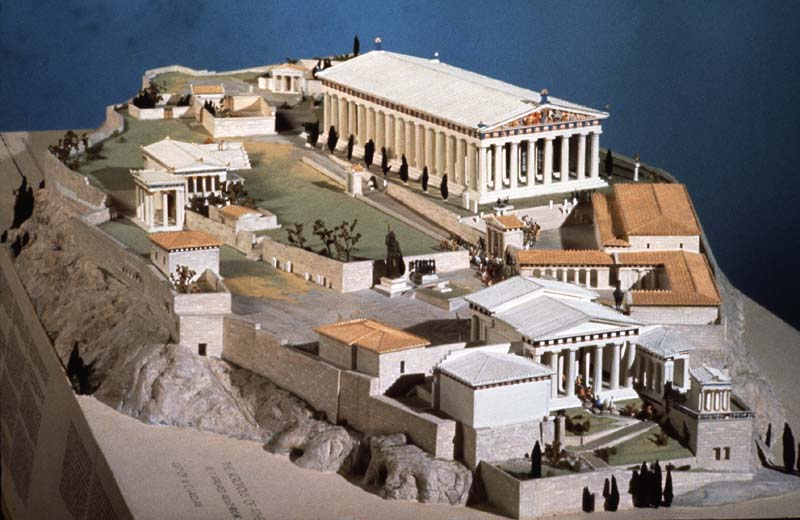
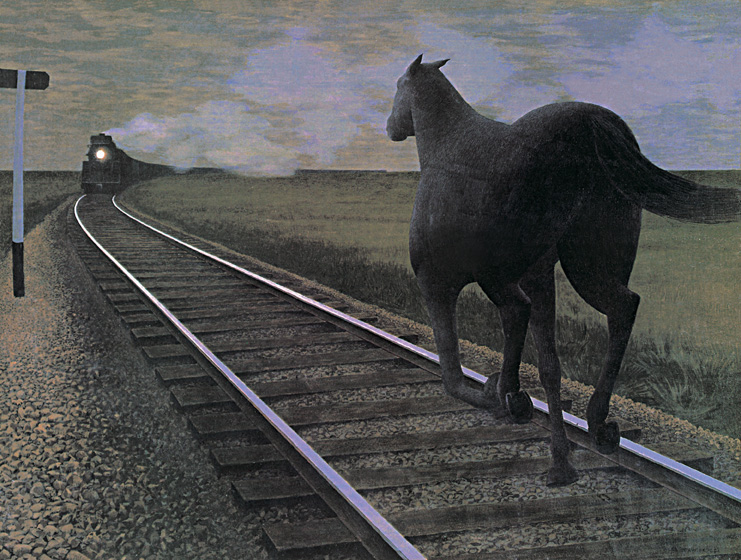
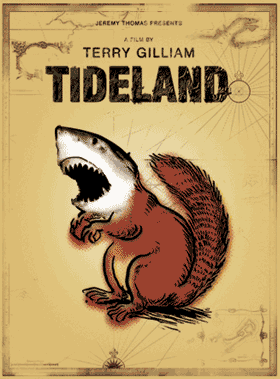
We finally watched Terry Gilliam's Tideland. It begins with a brilliant introduction by Gilliam in which he confesses that many people are not going to like the film, and exhorts us to remember that children are "resilient" and "designed to survive." I didn't like Fisher King much, but otherwise I love all things Gilliam. Tideland might be my new favourite. Like Philip Pullman in his Dark Materials series, Gilliam treats childhood suffering and magic-thinking survival strategies with rare insight and genuine respect. It's a ghoulish and supernatural film, but, next to Todd Solondz' Welcome to the Dollhouse, it is the most realistic film about a little girl that I have ever seen.
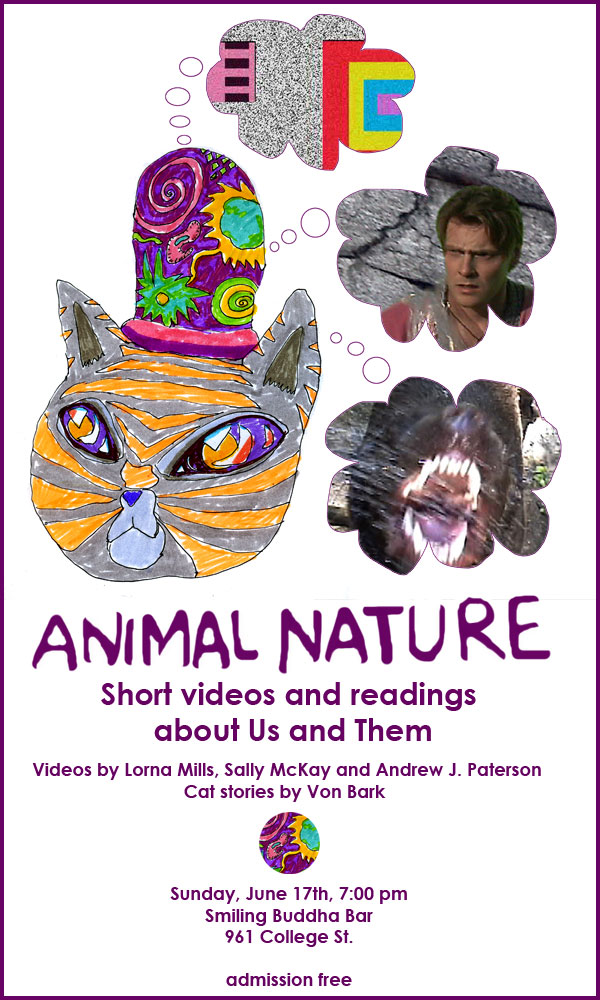


Timothy Comeau's new work "Outdoor Air Conditioning" (reproduced below) demonstrates, contra the recent humiliating announcement by PM-for-the- moment Steven Harper that Canada will not meet the Kyoto targets, that in the visual arts at least, we are doing our bit.
Comeau's work raises the bar for art within a conceptual framework, adding environmental impact awareness to create a neat tautological bundle. Not only is the work about the state of the environment (massively out of control and uncontrollable) but it is a model of environmental frugality: no materials, no crates, no shipping, no gallery, no printed matter, no mailings, no hard documentation, no archive. The work exists in the mind, and a mindful mind at that.
It leaves a child-size environmental footprint; Comeau's computer, mine and yours (heavy metals and other hazardous materials not easily disposed of yet dutifully replaced every two years), energy consumed (see David Suzuki's ad about the cost, in beer, of dedicated beer fridges), some miniscule part of the admittedly gargantuan infrastructure that supports the Internet. Proportionally, you have to think Comeau's digitally-relayed concept adds hardly at all to all that, unless it is in the way it fuels the passion for ever more powerful and energy consuming digital communications.
Is it not time that every artwork include in its specifications, an environment impact assessment?
- R. Labossiere
Today is June 5th and it's cold outside. I declare the local weather pattern on this day to be a readymade installation entitled:
Outdoor Air Conditioning.
a free cooling centre open to the public during this global warming heat wave
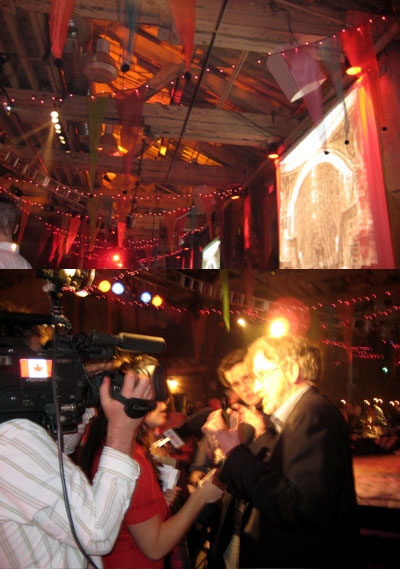
My dad won a big poetry prize yesterday.
Feeling no small degree of filial pride and a
zinger of a hangover...
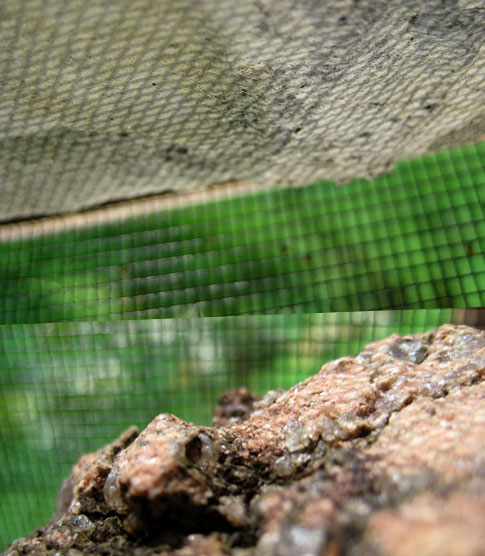
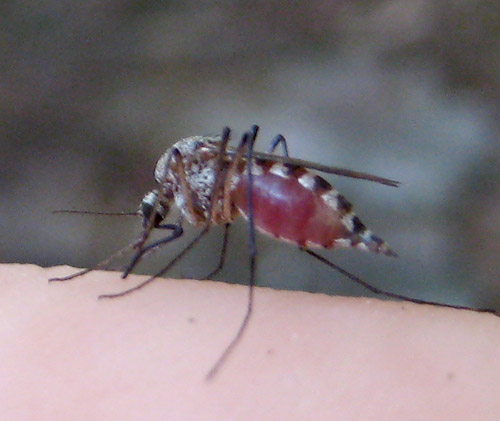
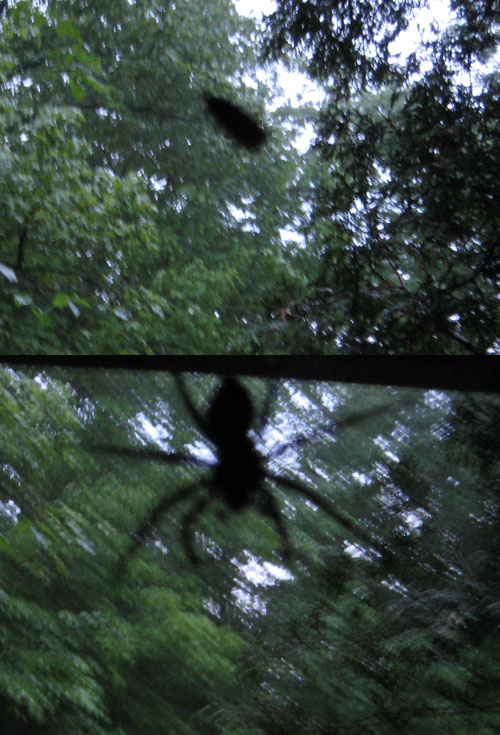
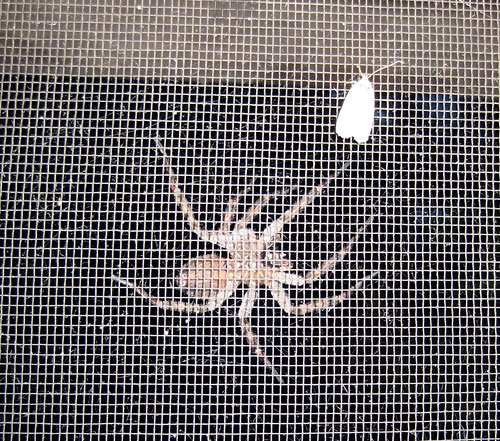
We just got back from the woods. I watched that little moth tease that Shelob-spider for quite awhile. As you can see from the photo with the flash (bottom) they were on opposite sides of the screen. Poor spider. Silly moth. It kept flying right into the spider's jaws, except the screen saved it every time. Do spiders exercise mind control (like cats)? Do moths have a deathwish?

Got Ten Questions About Art?
simpleposie invites you to submit a ten (10) question questionnaire on the subject of anything art related.
No question is too silly or too smart. Your questions can be tightly thematic or stream of consciousness.
Its not for money - only love... and the possibility of a great online art conversation.
If you would like to see your questionnaire on simpleposie this summer, the deadline is June 15, 2007.
Send your questionnaire to J@simpleposie
*All submissions subject to editorial approval.
